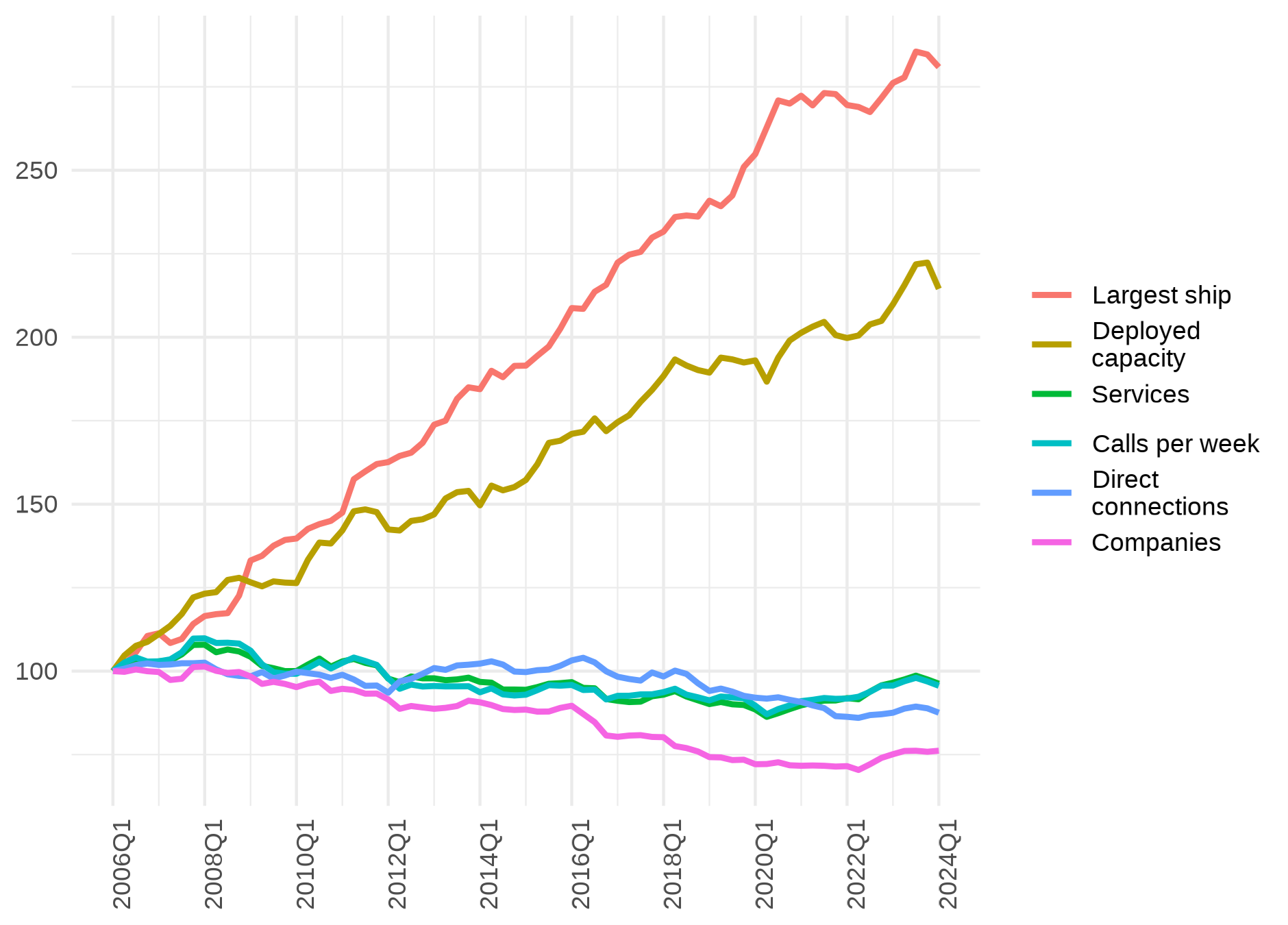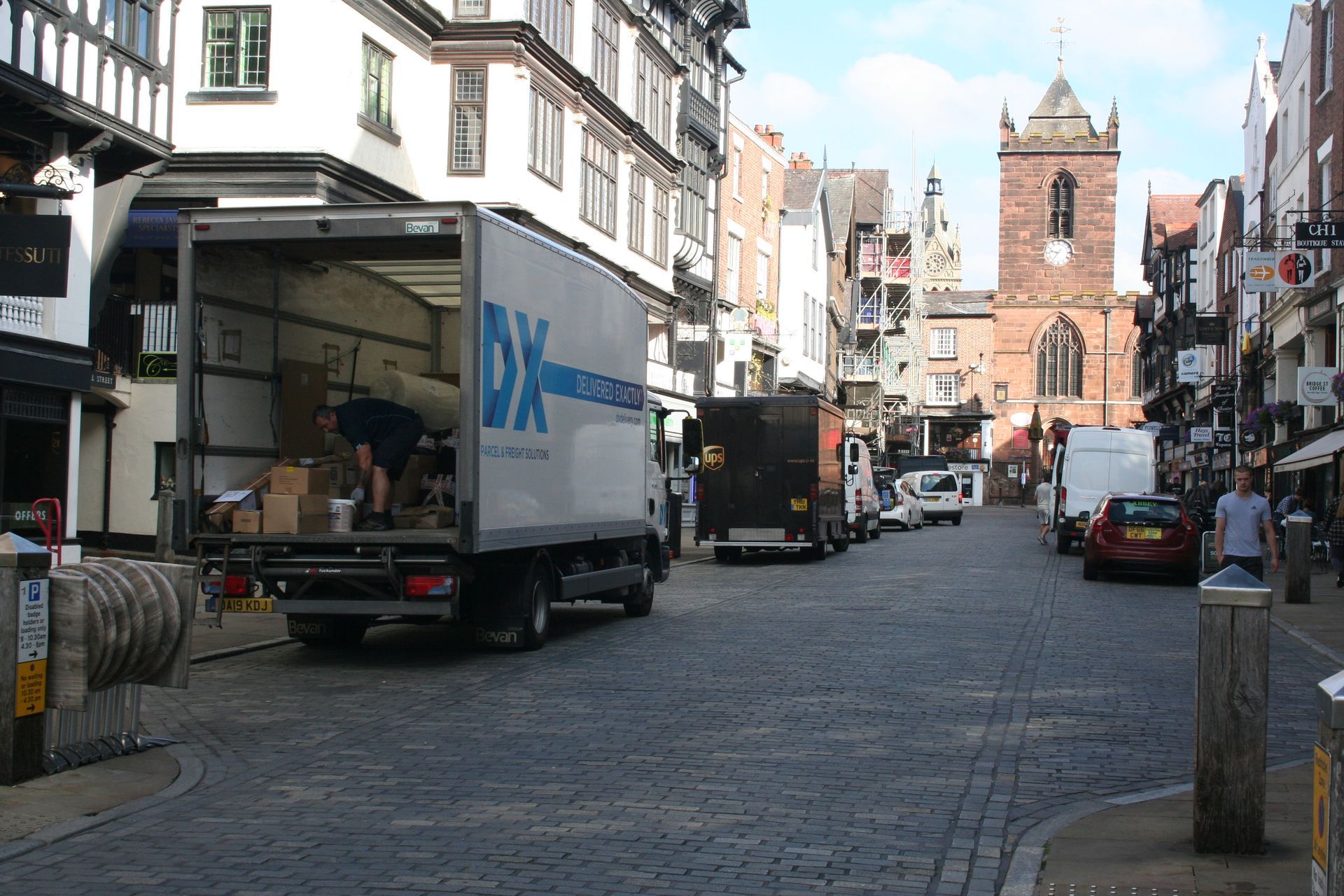VIEWPOINT



SERVICES
Forecasts
National and regional freight forecasts
We help you to understand the impact on the freight and logistics industry of changes in policy, and in market conditions that affect the demand for freight services, by using established modelling and forecasting techniques based on sound data, and an understanding of industry costs and trends. In the UK this has involved developing road, rail and port freight forecasts for the UK Government, the national rail infrastructure provider and the railway regulator using the Great Britain Freight Model (GBFM) and Transport for the North. The same modelling techniques have also been applied in the Middle East, Africa and a pan-European transport model.
Approach
- Building on a robust evidence base: the baseline model is calibrated to official data sources for each cargo type to ‘explain’ the existing position in terms of freight operating costs and revenues.
- Understanding the impact of change: develop future scenarios by translating policy and market change into costs and revenues for the freight and logistics industry.
- Taking account of stakeholder concerns: consultation with the key users and providers of freight transport, as well as public sector stakeholders.
- Developing the forecasts: producing quantified and multimodal forecasts of demand.
- Quantifying economic costs and benefits: providing the costs and benefits for business and society of the changes in demand.
Outcome
A quantified view of the future, with a breakdown by cargo type and the modal share, supported by an interpretation of its meaning for both policy-makers and businesses.
Clients include: national and regional government; road, rail and port infrastructure providers.
Freight traffic forecasts for infrastructure & services
Forecasts of traffic and revenue for transport infrastructure and services are developed at a global, national and service level, based on modelling techniques and an understanding of the key economic drivers involved. A quantitative approach is taken, generally based on our own databases and economic models and always on an understanding of the market and policy context within which change will occur.
Approach
- Building on a robust evidence base: baseline data is used to examine historic trends and ‘explain’ the existing position in terms of freight operating costs and revenues.
- Market research: consultation with the key potential users of the infrastructure or servce to understand their key requirements
- Developing the forecasts: produce baseline forecasts of demand using established techniques.
- Understanding the impact of change: develop future scenarios by translating policy and market change into potential change in market share.
- Finalising the analysis: conclude the forecasts with any necessary sensitivity analysis to take account of different scenarios.
Outcome
A quantified view of the future, with a breakdown by cargo type and the modal share, supported by an interpretation of its meaning for both businesses and the operators and investors in infrastructure and services.
Clients include: ports and terminals; infrastructure network providers; local and regional government; financial institutions.
Trade forecasts
Forecasts of trade are essential to developing forecasts of demand for infrastructure at ports, airports and across land borders and to allow international freight transport operators to plan for the future. As we have developed our own global trade database, the World Cargo Database (WCD), for trade in tonnes and by value between 240 countries and for 3,000 commodities, we are able to produce trade forecasts without any further data collection and based on existing techniques.
Approach:
- Building on a robust evidence base: use baseline data from the WCD for the relevant commodities and countries to examine historic trends.
- Developing forecasts: produce forecasts using the forecasting module of the WCD which uses an algorithm that provides a trend-based forecast weighted for the most recent years.
- Understanding the impact of change: analyse future scenarios by translating policy and market change into potential change in the economic drivers of trade.
- Finalising the analysis: conclude the forecasts with any necessary sensitivity analysis to take account of different scenarios.
Outcome
A quantified view of future trade for a country, for a commodity, for a piece of infrastructure or for an international freight service.
Clients include: ports and terminals; shippers and shipping lines.
Port traffic forecasts
Forecasts of trade are essential to developing forecasts of demand for port capacity as well as to establish the likely future prospects for existing ports. As we have developed our own global trade database, World Cargo Database (WCD), for trade in tonnes and by value between 240 countries and for 3,000 commodities, we are able to produce trade forecasts without any further data collection and based on existing techniques.
Trade forecasts give a baseline indicator for growth in the various port business sectors but port volume forecasts also require account to be taken of hinterland industry sectors, be they bulk liquids such as the chemical industry or power stations or steel manufacturing and processing and so forth.
Further, competing ports have to be taken into account in terms of competitive advantage by cargo sector, development plans, road and rail connectivity, marine access and berth parameters.
MDS Transmodal has a long history of providing port forecasts:
Approach:
- Building on a robust evidence base: using baseline data from the WCD for the relevant commodities and countries to examine historic trends; using national port statistics for mode sectors such as containers, roll on- roll off, bulks and so on.
- Developing forecasts: producing forecasts using growth factors for each commodity/cargo sector as appropriate using the forecasting module of the WCD alongside analysis of port throughput by mode of appearance and taking account of domestic industrial sector performance.
- Understanding the impact of change: analyse future scenarios by translating policy and market change into potential change in the economic drivers of trade.
- Finalising the analysis: conclude the forecasts with any necessary sensitivity analysis to take account of different scenarios.
Outcome
A quantified view of future trade for a port by commodity and cargo sector.
Clients include: ports and terminals; shippers and shipping lines, national government, regional authorities, banks and other financial institutions.
